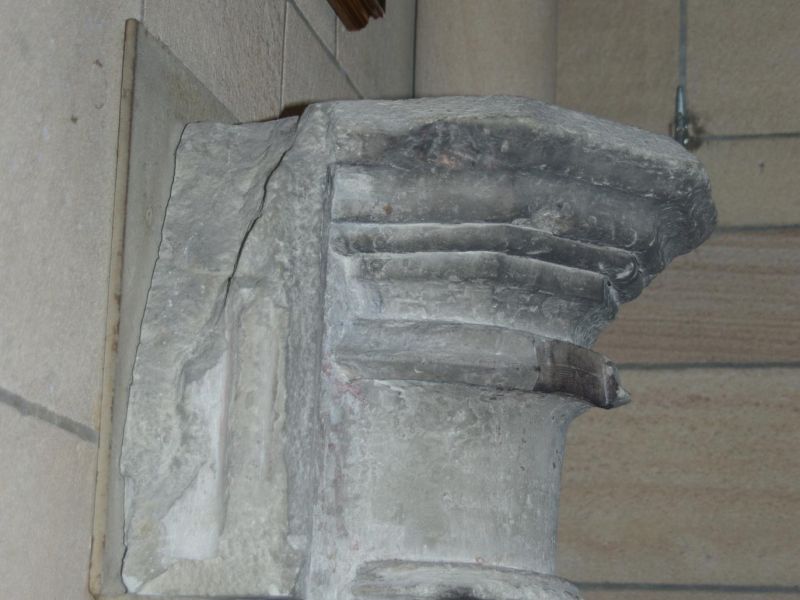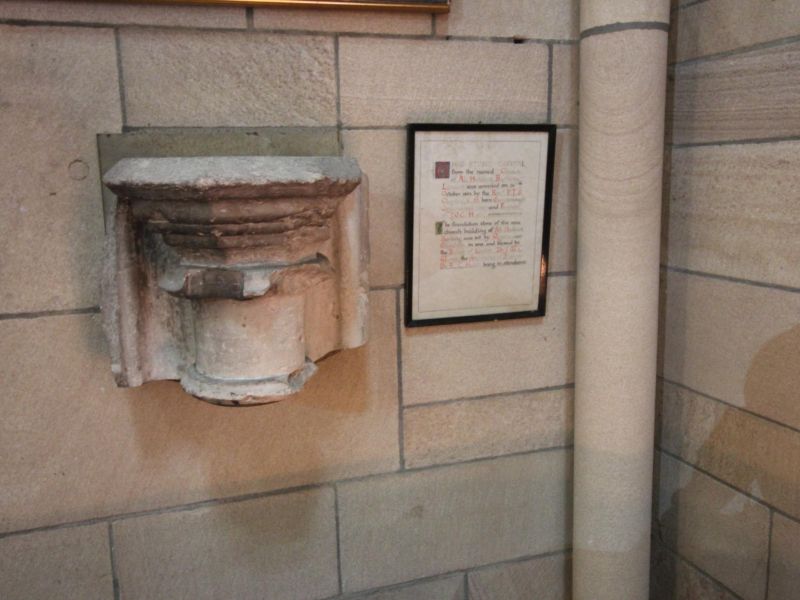The All Hallows stone - remembering the Battle of Britain and the London Blitz in the Second World War
In St John's Cathedral in Brisbane may be found a stone capital from the ruins of the Church of All Hallows Barking adjacent to the Tower of London. During the Second World War this ancient church was bombed and almost destroyed by the German Air Force (the "Luftwaffe") during the London Blitz which saw the Luftwaffe conduct devastating air attacks on industrial and civilian targets in London, particularly in the eastern sections of the city.
After the war, All Hallows Church was rebuilt. The foundation stone was laid by Queen Elizabeth, the wife of King George VI. Attending the foundation ceremony was the Anglican Archbishop of Brisbane, the Most Reverend Reginald Halse, and he brought back to St John's in Brisbane the stone capital which had been plucked from the ruins of the British church. The Cathedral authorities attached it to the wall of the Cathedral's South Transept. The stone was unveiled by the Vicar of All Hallows, Queensland born the Rev'd "Tubby" Clayton CH, when he visited the Cathedral in 1952.
The stone was installed to honour a world-wide welfare organisation for service men and women founded by Fr Clayton known as "Toc H". But the stone also evokes another story. The stone is still blackened by the smoke from the German bomb which destroyed All Hallows, and its appearance is a reminder of the damage and suffering enduring by the British people at the hands of the Luftwaffe. Equally, the stone recalls the contribution made by Australian members of the Royal Air Force ("RAF") to the defence of Britain during the German air attacks.
Night after night these young men of RAF Fighter Command took off in their planes to defend Britain against German attack during the German air raids over England which became known as the Battle of Britain. Subsequently, many other Australians joined RAF Bomber Command taking the air war over Nazi Germany. No 460 Squadron of Bomber Command was mostly Australian and dropped more bomb tonnage than any other unit in the Command. In all, 20,000 Australians served with Bomber Command, of whom 3,400 lost their lives..
War time British Prime minister famously lauded the young men of the RAF in fending off the Luftwaffe and the threat to Britain when he declared "Never in the field of human conflict was so much owed by so many to so few ". The Battle of Britain was an especially decisive event in the war against Nazi Germany. for if Hitler's air war against Britain had succeeded all of Europe would have fallen under Nazi domination with its ideology of racial superiority and death camps. Strategically, the British Isles would no longer have been available from which to mounter the counter invasion of Europe by Allied ground forces which took place in June 1944, resulting in the eventual destruction of the Nazi regime.
Denzil Scrivens
- Taken from "St John's Cathedral and the Anzac Legend" by Denzil Scrivens printe… https://www.stjohnscathedral.com.au/discover-st-johns/

 Denzil Scrivens
Denzil Scrivens